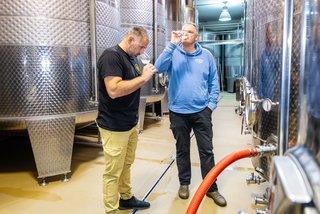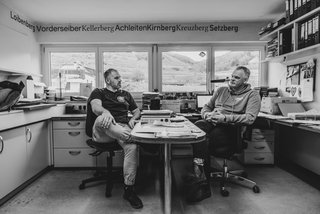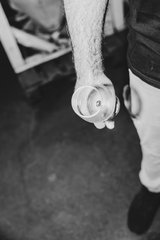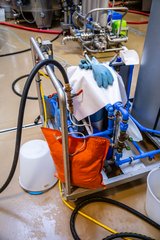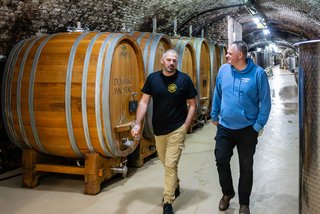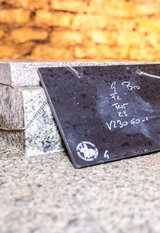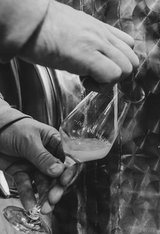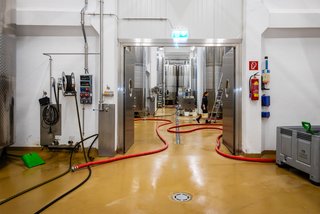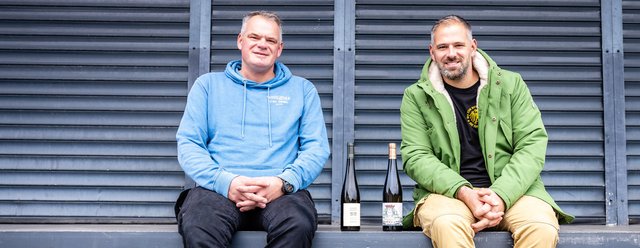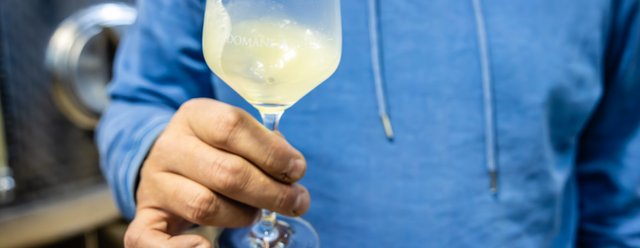
Tasting underground with the Frischengrubers
Let's take a look at what happens once the grapes have been harvested. We follow Georg and Heinz Frischengruber as they sample their way through the cellar at Domäne Wachau.
where 300 tanks are waiting. Since the harvest in early November, many and varied batches have been maturing in the cellar. Here winemaker Heinz Frischengruber keeps track of progress. Or rather his Excel spreadsheets. “In an operation of this scale, it’s impossible to keep everything in your head, ” he admits with a grin. As the largest winery in the region, Domäne Wachau processes roughly a third of the Wachau’s total vineyard yield.
The numbers at Georg Frischengruber’s estate can hardly compare: in his cellar at Rührsdorf, he is currently watching over about 30 tanks. Meanwhile, the two brothers face the same questions: How long should the must have skin contact? How long should the wine be left on the gross lees? What should we mature the batch in, a large wooden barrel or a steel tank? Domäne Wachau also has the options of amphoras and stone barrels.
Tasting, tasting, and again tasting. That will be the crucial activity in the coming weeks. “It’s important to taste the wine every day to see how it’s developing,” Georg explains. This allows individual attention to each wine. “There’s a world of difference between making a Steinfeder and making a Smaragd. This reflects in the way you approach tasting,” Heinz says. “Experience comes with time, and you learn to relax knowing it will turn out fine in the end. We have, after all, fantastic material to work from.”
Fresh wines for purist tastes is the common goal the two brothers pursue. Bland mainstream? No thank you. “I focus on the acid structure. It’s what gives wine that certain lightness,” Georg reveals. “I also like to work with skin contact time. This is what makes for the tannin level. Along with acidity, it gives a wine that extra grip,” Heinz adds. The winemaker at Domäne Wachau may very well mature a single-vineyard wine in different batches, each with longer or shorter skin contact, and later blend them.
Skin contact time, the time on the gross lees and fermentation temperature are the cellar tools used to tweak a wine, endowing it with a special style. “This is how we winemakers leave our signature on the vintage,” the two brothers agree.
Climate change is a concern the brothers share: “There’s no denying it. The winters are now warmer. Rain now comes more often in the spring, many times followed by dry periods in the summer. Figuring out a way to respond is challenging,” Heinz admits. One way he has found is to encourage sustainable vineyard cultivation at Domäne Wachau. “The share of organically grown grapes is an immense factor. Our response to more extreme growing conditions is to ensure robuster vines. And that means healthy soils.”
One thing is for certain: quality begins in the vineyard. The job in the cellar is to make sure all of it gets into the bottle. And the more time spent tasting, the better – above or below ground.
